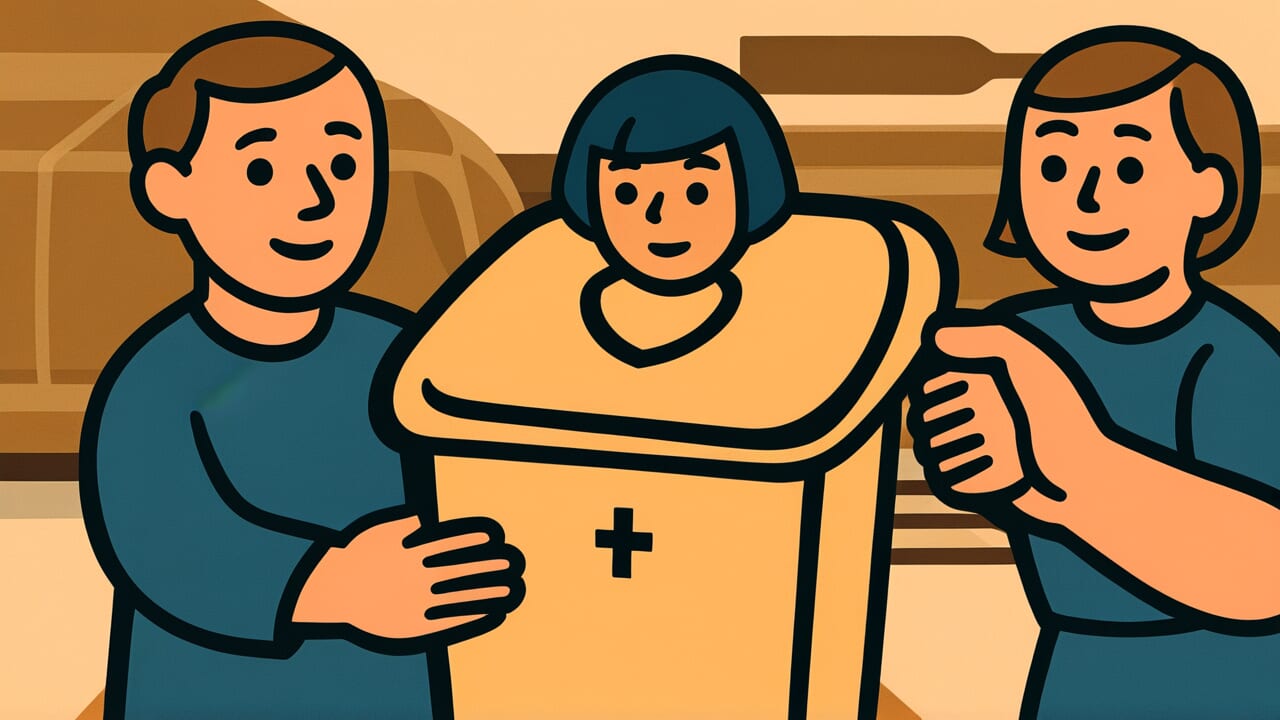How to Read “People and containers are what you have on hand”
Hito to iremono wa ariawase
Meaning of “People and containers are what you have on hand”
This proverb means that both people and containers can serve their purpose with whatever you have available at the moment.
If you have many dishes and containers, you can use them conveniently. But if you have only a few, you can still make do by using them creatively.
The same applies to people. With many hands, work progresses quickly. With fewer people, you can still manage by working efficiently.
People use this proverb to encourage others who worry about shortages of workers or resources. It also reminds us not to waste what we have when we have plenty.
Instead of giving up by saying “We don’t have enough,” this expression promotes a positive attitude: “We can make it work with what we have.”
Even today, this saying offers encouragement when project teams are smaller than planned or when budgets and resources are limited.
It expresses a flexible and practical mindset. You can achieve your goals by being creative with what’s available, even without perfect conditions.
Origin and Etymology
No clear records exist about the exact source or when this proverb was created. However, based on its structure, it likely emerged naturally from the wisdom of ordinary Japanese people in their daily lives.
The pairing of “people and containers” is quite interesting. At first glance, these seem like completely different things. But this combination reveals a deep insight.
Containers—dishes, buckets, boxes—have always been essential in daily life. People use them constantly for serving food, carrying water, and transporting goods.
In old Japan, households didn’t have the abundance of goods we have today. Yet people managed their lives by using whatever containers they had on hand creatively.
They worked around shortages and kept things running. Interestingly, they noticed that the same flexibility applied to people.
Working with many people is efficient. But even with few people, work gets done through ingenuity. When you have many people, you can divide roles conveniently.
This quality of “fitting just right” resembled the adaptability of containers. Our ancestors likely paired these two concepts after noticing this similarity.
This proverb was born from life wisdom. It recognizes the common “adaptability” shared by both objects and people, despite being different things.
Usage Examples
- Unexpected guests arrived, but people and containers are what you have on hand, so we’ll manage with just the family members here
- Budget cuts reduced our staff, but people and containers are what you have on hand, so let’s work creatively with our current team
Universal Wisdom
The proverb “People and containers are what you have on hand” expresses trust in humanity’s remarkable ability to adapt.
We tend to count what we lack. “If only we had more people.” “If only we had more tools.” But our ancestors learned something different through long experience.
Both people and things possess a mysterious quality of “fitting just right.”
Behind this wisdom lies flexibility that doesn’t demand perfection. Ideal conditions rarely align in life. Yet people have always managed to achieve their goals through ingenuity, cooperation, and limited resources.
Small teams have their own way of working. Large teams have their own role divisions. Few containers get used repeatedly. Many containers get assigned specific purposes.
This attitude of “making do with what you have” may be the essence of human vitality.
This proverb has endured because it teaches us to focus on what we have rather than lamenting what we lack.
Nothing begins if you wait for perfect conditions. Constraints actually spark creativity and ingenuity. They help people produce results beyond expectations.
This positive view of human nature has supported people across generations.
When AI Hears This
A system’s overall processing speed is determined by its slowest part. For example, a factory machine might produce 100 items per hour.
But if the previous step only processes 50 items, the entire factory produces just 50. What’s interesting is that this proverb’s advice to “start with what you have” actually eliminates waiting time as a bottleneck.
Working three days with available tools usually produces more than spending three days searching for perfect tools. Perfectionism hides two constraints: search costs and opportunity losses from waiting.
Goldratt, who proposed the Theory of Constraints, said systems improve by removing bottlenecks one at a time. But this proverb says something more fundamental.
Until you start moving, you can’t even identify the real constraints.
Another key point: you can’t accurately measure human abilities or tool performance until you actually use them.
Perfect-seeming people sometimes fail in practice. Old tools sometimes show unexpected strengths. By accepting availability constraints, systems start running, data accumulates, and true optimization becomes possible.
The paradox is that waiting for perfection itself becomes the biggest constraint.
Lessons for Today
This proverb teaches modern people to free themselves from the assumption of “not enough.” Contemporary society constantly pushes us to want “more.”
More talent, more budget, more time. But what we really need might be the wisdom to maximize what we already have.
Startup companies challenge large corporations with small teams. Households manage within their budgets. This principle makes both possible.
Constraints make people creative. They eliminate waste and help us focus on essentials. Opportunities never come if you wait for perfect conditions.
If you’re struggling with staff shortages or limited resources right now, remember these words. Think about what you can do with your current team and available tools.
Things move forward more than you’d expect. When you have plenty, don’t waste it. Expand what you can accomplish.
What matters most is the courage to take that first step, believing that somehow, things will work out.



Comments